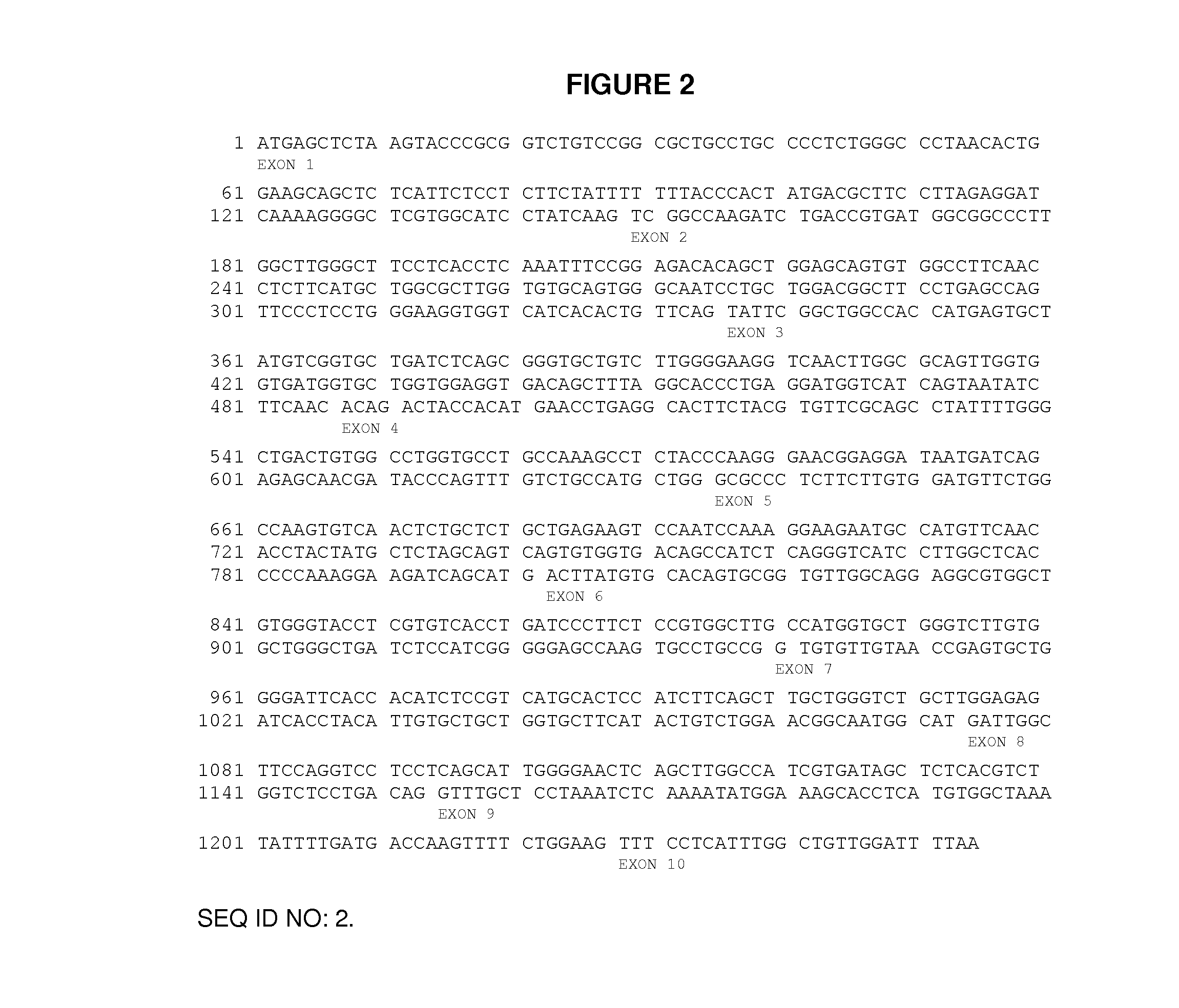Method for the identification by molecular techniques of genetic variants that encode no d antigen (d-) and altered c antigen (c+w)
a technology of c antigen and molecular techniques, applied in the field of methods for genotyping and blood cell antigen determination, can solve the problems of blood transfusion failure in scd patients, difficult to determine the correct phenotype for c, and current methods of genotyping are difficult to achieve. achieve the effect of considerable efficiency savings
- Summary
- Abstract
- Description
- Claims
- Application Information
AI Technical Summary
Benefits of technology
Problems solved by technology
Method used
Image
Examples
examples
Identification of Genetic Variants that Encode No D Antigen (D−) and Altered C Antigen (C+W)
[0131]The following example relates to a method of identifying RHD*DIIIa-CE(4-7)-D or RHD*DIIIa-CE(4-7)-D)-like variants. The method described herein has been applied to 58 samples previously known to contain RHD / RHCE hybrid exon 3. The process described below proceeds from the genotyping of said samples and the subsequent analysis of said samples grouped by genotype and / or predicted phenotype. The serotype assigned to a group corresponds to analysis performed only on a subset of the samples in said group.
Materials & Methods
[0132]Genomic DNA was extracted from nucleated cells in a blood sample by cell lysis. Extracted DNA was purified on an affinity column. Both cell lysis and DNA purification were performed with a QIAamp Blood kit (Qiagen, Germany) by following manufacturer protocols and recommendations. Purity of DNA was determined by spectrophotometry on a Nanodrop instrument (Nanodrop, DE...
PUM
 Login to View More
Login to View More Abstract
Description
Claims
Application Information
 Login to View More
Login to View More - R&D
- Intellectual Property
- Life Sciences
- Materials
- Tech Scout
- Unparalleled Data Quality
- Higher Quality Content
- 60% Fewer Hallucinations
Browse by: Latest US Patents, China's latest patents, Technical Efficacy Thesaurus, Application Domain, Technology Topic, Popular Technical Reports.
© 2025 PatSnap. All rights reserved.Legal|Privacy policy|Modern Slavery Act Transparency Statement|Sitemap|About US| Contact US: help@patsnap.com


